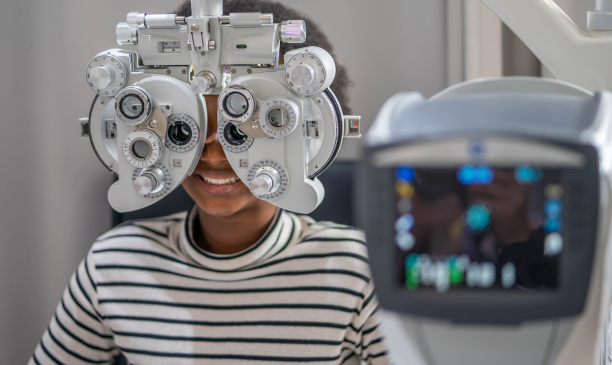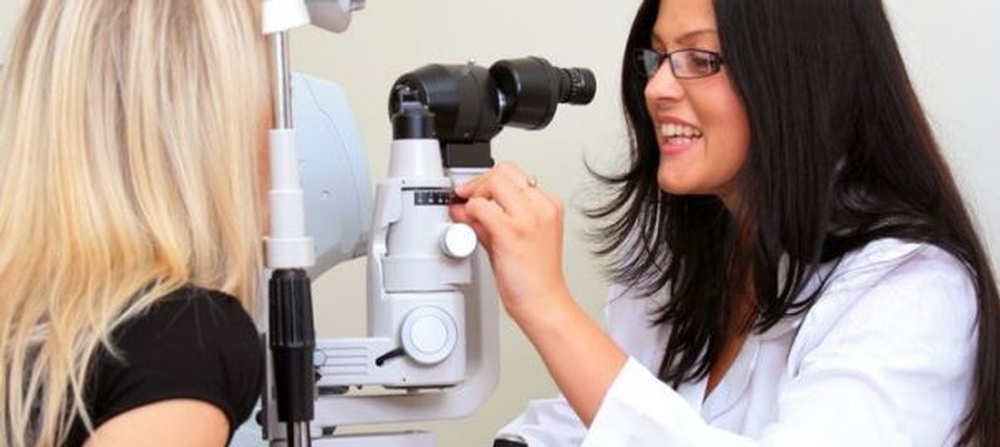The Comprehensive Eye Exam: What to Anticipate Throughout Your Visit to the Eye Doctor
A browse through to the eye medical professional for a detailed eye exam is even more than a regular examination; it is an important step in protecting your visual health and wellness. What specifically occurs throughout the eye health and wellness assessment, and how does it influence the prescription procedure?
First Consultation
The first consultation during an eye examination works as a critical foundation for understanding a patient's aesthetic wellness demands. This phase sets the tone for the whole assessment process, enabling the optometrist to gather essential information concerning the patient's case history, way of life, and particular vision issues. By meticulously reviewing any pre-existing conditions, medicines, or previous surgical treatments, the eye care expert can customize the evaluation to attend to private requirements successfully.

Moreover, the preliminary consultation is a possibility for individuals to voice any problems or inquiries, fostering a joint relationship with their doctor. This communication not only ensures that the patient really feels notified and comfortable but additionally equips them to get involved proactively in their eye health and wellness management. Jointly, these conversations enable the optometrist to develop an individualized examination strategy, guaranteeing ideal care and exact diagnosis.
Visual Acuity Test
Beginning the core parts of an eye exam, the aesthetic acuity examination is developed to analyze the intensity and clarity of a person's vision. This vital assessment assists figure out how well an individual can recognize letters or symbols at a standard distance, normally making use of a Snellen chart (Opticore Optometry). The graph comprises rows of letters that reduce in dimension from leading to base, with the patient positioned at a popular range of 20 feet
During the test, the patient is asked to cover one eye and read aloud the tiniest line of letters they can see clearly. This process is duplicated for the various other eye. The outcomes are videotaped as a portion, with 20/20 vision suggesting normal visual acuity-- where the individual can see at 20 feet what an individual with typical vision can see at that distance.
The visual skill test also identifies possible refractive errors such as astigmatism, hyperopia, or nearsightedness, which could necessitate rehabilitative lenses. By establishing a standard of visual efficiency, the examination is a crucial diagnostic tool that helps the eye treatment professional in creating an appropriate treatment strategy tailored to the client's one-of-a-kind aesthetic demands.
Eye Health And Wellness Analysis
Complying with the visual skill examination, a thorough eye health analysis is performed to make sure the overall wellness of the eyes. This important segment of the eye examination entails a detailed examination of both the exterior and internal structures of the eye.
Through the usage of ophthalmoscopy or fundus photography, the retina, optic nerve, and blood vessels are meticulously assessed. In several instances, pupil expansion is executed to boost presence of the interior eye frameworks, although this might result in short-term light sensitivity for the person.
In addition, intraocular pressure is determined to screen for glaucoma risk. This is normally done making use of click here to read tonometry, which can identify raised pressure degrees that might suggest possible damage to the optic nerve. Jointly, these evaluations form an extensive analysis to preserve eye wellness.
Refraction and Prescription
Refraction is a sophisticated procedure performed by eye treatment experts to establish the precise lens power needed to fix refractive errors such as nearsightedness, hyperopia, presbyopia, and astigmatism. The objective of this treatment is to assess exactly how light bends as it passes through the eye, enabling the practitioner to figure out whether corrective lenses are necessary for enhanced visual skill.
During the refraction procedure, the person is asked to look with a phoropter, a gadget that consists of various lenses. The professional will methodically transform these lenses and ask the patient to contrast clearness between options till the most effective possible vision is attained. This procedure is important in crafting an accurate prescription that defines the proper lens power for link eyeglasses or contact lenses.
The prescription stemmed from this procedure not just enhances vision however likewise functions as a structure for choosing suitable rehabilitative eyeglasses. It is important to make certain that prescriptions are on a regular basis updated, as adjustments in vision can take place gradually, stressing the value of regular eye assessments. This careful attention to detail aids keep clear, comfy vision in life.
Follow-Up Referrals

Throughout a follow-up browse through, the eye medical professional will carry out a collection of examinations to review visual skill and check for any type of adjustments in vision that may require an upgrade to the prescription. In addition, the follow-up provides a chance to go over any type of pain or problems experienced with existing glasses. Modifications can be made to ensure comfort and efficacy, whether with lens alteration or structure modifications.
For people with ongoing problems such as glaucoma, diabetes-related eye problems, or macular degeneration, even more frequent follow-ups might be needed. These visits are important for handling and potentially reducing the Go Here progression of eye disease. Abiding by these referrals can substantially contribute to preserving visual wellness and stopping long-lasting difficulties.
Conclusion
The comprehensive eye exam is a necessary process for keeping visual health and wellness, including a comprehensive analysis of case history and vision issues. Key elements include the visual acuity test, which examines vision clarity, and the eye health assessment, which examines the general problem of the eyes. Refraction examinations assist figure out the precise lens prescription necessary for optimal vision modification. Follow-up referrals provide support for continuous eye treatment, ensuring that any kind of possible concerns are dealt with without delay and efficiently.
A visit to the eye medical professional for an extensive eye test is more than a routine check-up; it is a vital step in securing your aesthetic wellness.Kicking off the core parts of an eye examination, the aesthetic skill test is developed to examine the sharpness and clarity of a person's vision.Adhering to the visual acuity test, a thorough eye health and wellness analysis is carried out to ensure the general wellness of the eyes. These gos to enable the eye treatment expert to keep an eye on adjustments in vision, upgrade prescriptions, and examine the total health of the eyes. Key parts include the aesthetic acuity examination, which examines vision clearness, and the eye wellness analysis, which analyzes the overall condition of the eyes.